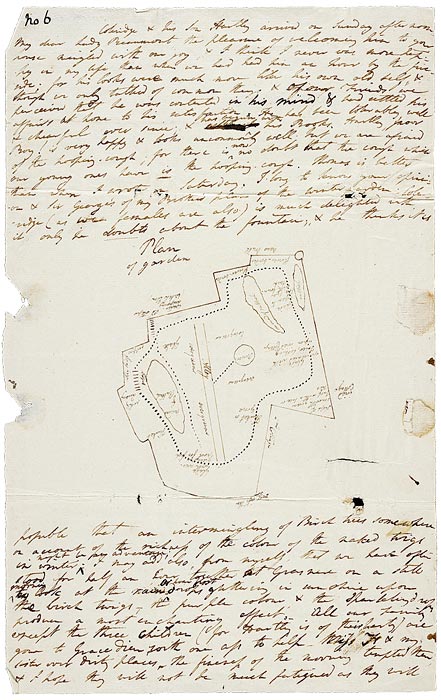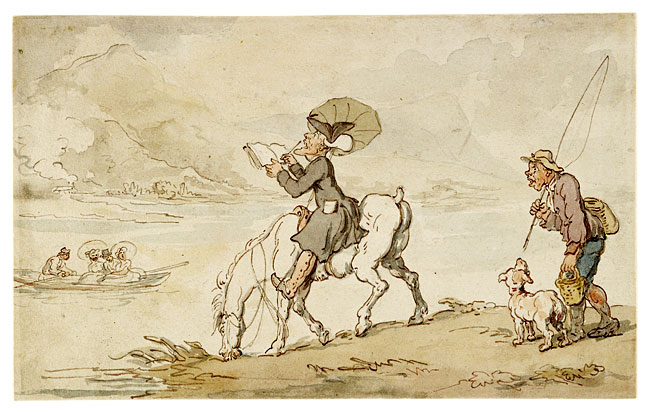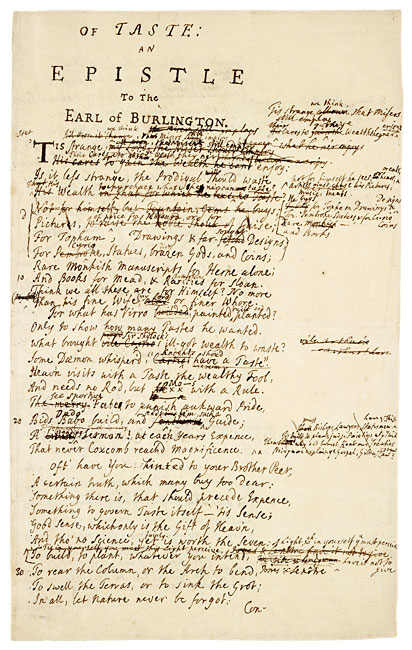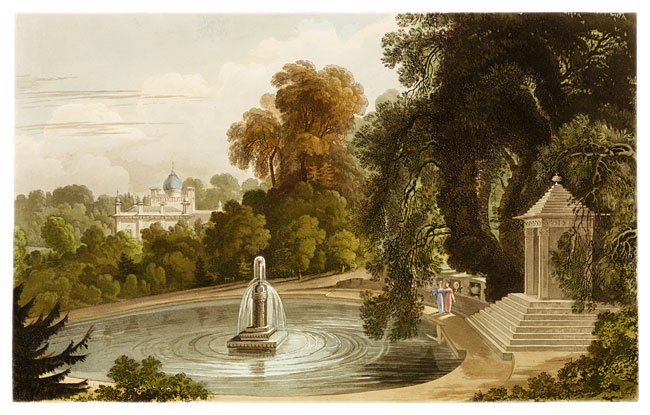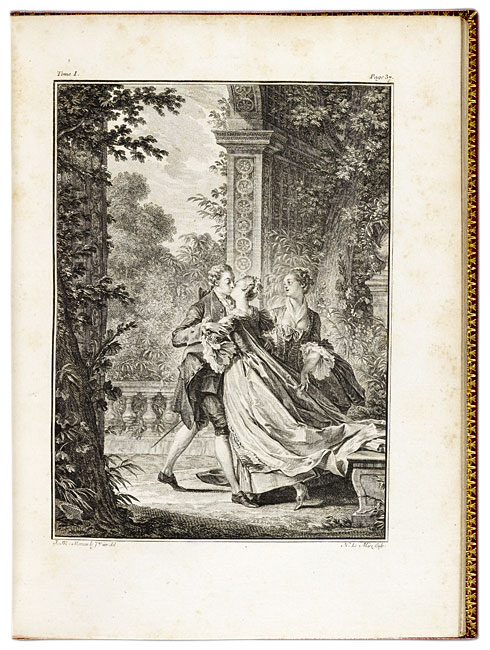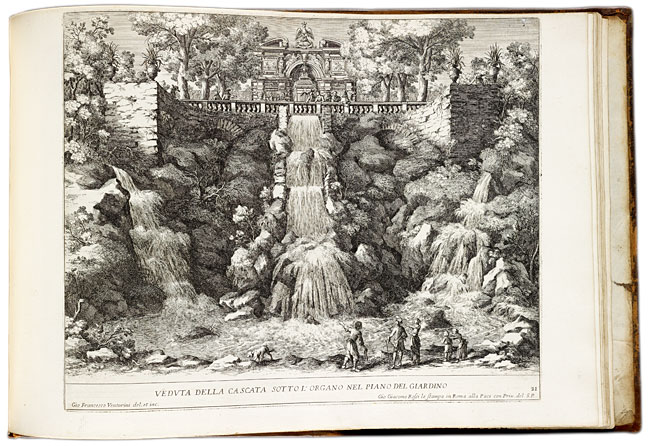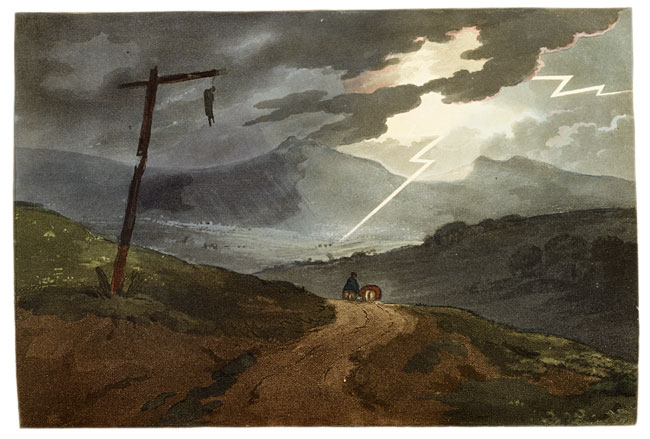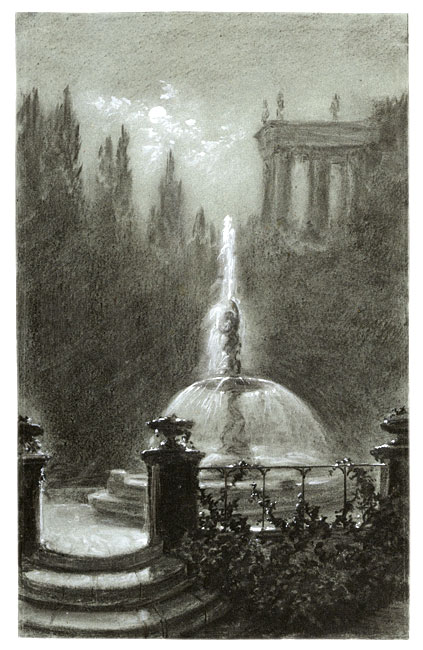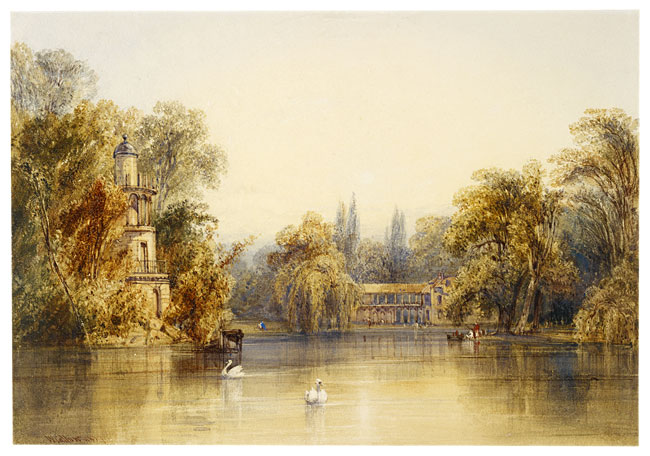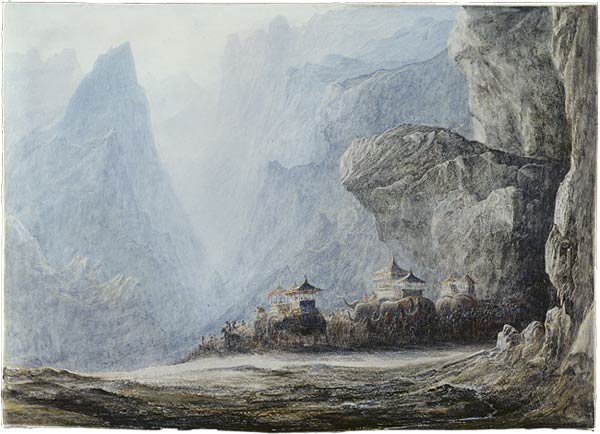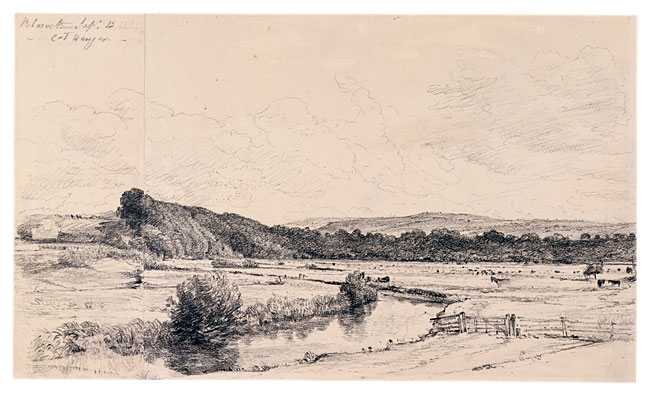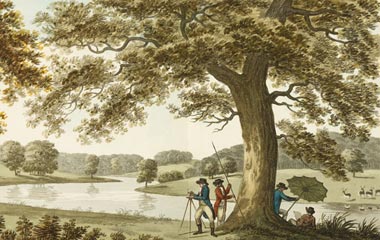
Scenic vistas, winding paths, bucolic meadows, and rustic retreats suitable for solitary contemplation are just a few of the alluring naturalistic features of gardens created in the Romantic spirit. Landscape designers of the Romantic era sought to express the inherent beauty of nature in opposition to the strictly symmetrical, formal gardens favored by aristocrats of the old regime.
The Romantics looked to nature as a liberating force, a source of sensual pleasure, moral instruction, religious insight, and artistic inspiration. Eloquent exponents of these ideals, they extolled the mystical powers of nature and argued for more sympathetic styles of garden design in books, manuscripts, and drawings now regarded as core documents of the Romantic Movement. Their cult of inner beauty and their view of the outside world dominated European thought during the late eighteenth and early nineteenth centuries.
The exhibition features approximately ninety highly influential texts and outstanding works of art, providing a compelling overview of ideas championed by the Romantics and also implemented by them in private estates and public parks in Europe and the United States, notably New York's Central Park.
Drawn from the Morgan's holdings of manuscripts, drawings, and rare books, as well as lavishly illustrated landscape albums from private and other public collections, the exhibition attests to the artistic creativity and intellectual ferment of the era, a time when technological advances in book production greatly enhanced the transmission of ideas. Steel engravings in William Cullen Bryant's Picturesque America (1872–74) helped to celebrate the scenic splendors of this country. Lithographs in Prince Pückler-Muskau's Hints on Landscape Gardening (1834) depict the improvements he made in his vast estate at great expense. His "parkomania" eventually drove him into debt and compelled him to sell the garden paradise he had created.
Also on view are two manuscript Red Books by Humphry Repton (1752–1818), the leading landscape architect of his time and author of theoretical treatises greatly admired by Pückler and other European connoisseurs. In these publications and the Red Books (known for their characteristic red bindings), Repton developed a technique of showing before-and-after views of picturesque scenery so that his readers and clients could see at a glance what he expected to accomplish.
The proposals of Frederick Law Olmsted and Calvert Vaux for the design of Central Park can be seen in their famous "Greensward" plan (1858), a large and detailed pen-and-ink drawing they submitted to a competition organized by the park commissioners. For their prize-winning "entry no. 33," they also prepared presentation boards with the "present outlines" in photographs attributed to Mathew Brady and the "effect proposed" in oil sketches made by Vaux. Two of the twelve presentation boards are on display.
The exhibition includes literary manuscripts for important Romantic and Pre-Romantic works, such as Jean-Jacques Rousseau's hugely popular novel, Julie, ou, La Nouvelle Héloïse (1761), which introduced highly influential theories of landscape design. Equally influential was Alexander Pope's Epistle to Lord Burlington (1731), a verse satire admonishing wealthy proprietors of country estates to scorn self-indulgent follies and respect the "Genius of the Place," the natural beauty of the terrain. Here, too, the author's original manuscript is shown.
Landscape art of the Romantic era also expressed the reverence for nature and aesthetic ideals apparent in garden design of that period. Among the drawings on view are such Romantic masterpieces as Caspar David Friedrich's Moonlit Landscape (ca. 1830) and J. M. W. Turner's The Pass at St. Gotthard (1843), which formerly belonged to the art critic John Ruskin. Turner's drawing is shown in conjunction with Ruskin's manuscript of Modern Painters, which defends the work of Turner—just one of many cultural connections revealed in this exhibition.
This exhibition is underwritten by the Johansson Family Foundation.
Generous support is provided by Janine Luke and Melvin R. Seiden, as well as by The Bodman Foundation, Charles C. Butt, The Chilton Foundation, the Heineman Foundation for Research, Educational, Charitable and Scientific Purposes, Inc., and Deutsche Lufthansa AG.
The catalogue is made possible by The Foundation for Landscape Studies; the Graham Foundation for Advanced Studies in the Fine Arts; Patrick and Elizabeth Gerschel; Furthermore, a program of the J. M. Kaplan Fund, Inc.; the German Consulate General in New York; the Consulate General of the Republic of Poland in New York; and the Andrew W. Mellon Fund for Research and Publications.
View of the Welbeck Estate, Humphry Repton (1752–1818), Sketches and Hints on Landscape Gardening (London, 1794). PML 46448. Gift of Henry S. Morgan and Junius S. Morgan, 1954. Photography, Graham Haber, 2009.

